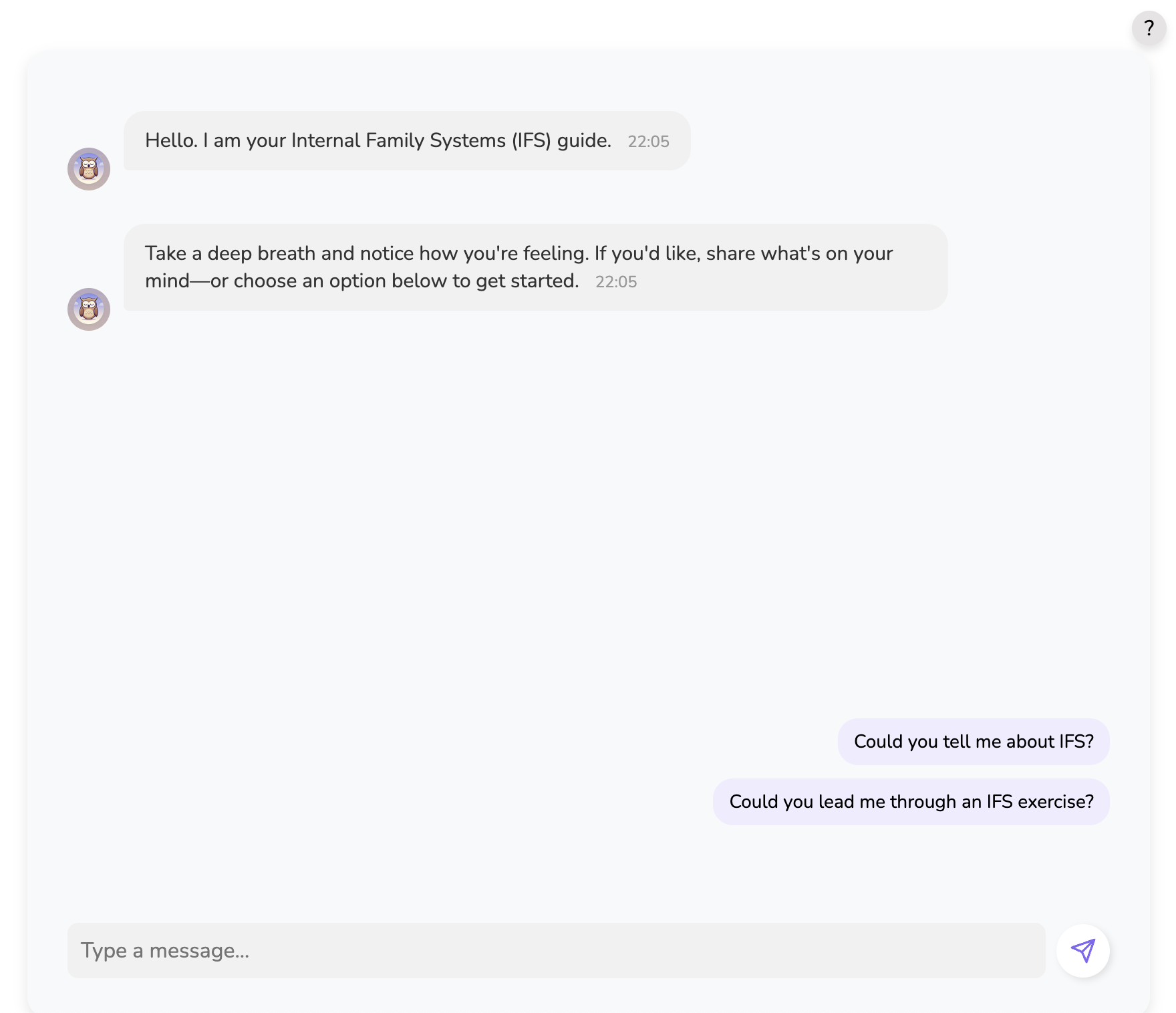
IFS Therapy App
Designing a calm, conversational experience for Internal Family Systems therapy
My Role
- Position: Independent Creator
- Responsibilities: UX/UI Design, AI Integration, Front-End Development
- Collaborators: Feedback from friends, family, and early testers
Summary
As a personal side project, I designed and built a calming, interactive web app to guide users through Internal Family Systems (IFS) therapy exercises. Inspired by books and podcasts, I wanted to create something that made IFS practices easier to do alone, especially for users unfamiliar with therapeutic language or structures.
Problem
IFS therapy exercises are powerful but can be hard to navigate on your own. Many resources exist in books or audio, but I found they lacked interactivity and structure when doing the exercises solo. I wanted to create a tool that brought a gentle, supportive interface to a therapeutic process.
Goals
- Make IFS therapy concepts accessible and understandable
- Create a soft, calming user experience for sensitive users
- Guide users through structured, personalized IFS exercises
- Experiment with lightweight, reliable AI techniques
Process
I began by mapping out a flow based on common IFS exercises. I designed a gentle interface with soft animations, warm colors, and conversational pacing. I prototyped different conversational AI approaches—starting with fine-tuning a simple model and RAG pipelines, but ultimately found that prompt engineering offered the clearest, most reliable user experience. I tested the design with friends and family, refining both tone and structure based on feedback.
Design Decisions
- Created a soothing visual style to match the therapeutic intent
- Used animations to ease transitions and reinforce personalization
- Prompt-engineered responses to simulate a soft, validating tone
- Designed chat flow to mimic a real IFS session with branching prompts

Challenges
Working with mental health-related content required sensitivity, especially in tone and trustworthiness. While RAG and fine-tuned models were powerful, they added complexity without clear benefit. I focused instead on highly controlled prompt design to keep the experience emotionally safe and responsive to user input.
Impact
- Created a fully functioning prototype used by early testers
- Validated prompt-only AI as a safe and lightweight approach
- Demonstrated potential for AI-assisted self-guided therapy tools
Reflection
This project combined my love of design, psychology, and emerging technology. It taught me the value of simplicity when working in sensitive domains, and showed me how meaningful a well-crafted interface can be in making therapeutic tools feel safe and approachable.
Project information
- Category Mental Health, AI Interaction Design
- Client Personal Project
- Tools React, TypeScript, Framer Motion, OpenAI API
- Project date January 2025
- Project URL https://ifs-guide.vercel.app/
- Visit Website